SSZT046 january 2023 AWRL6432
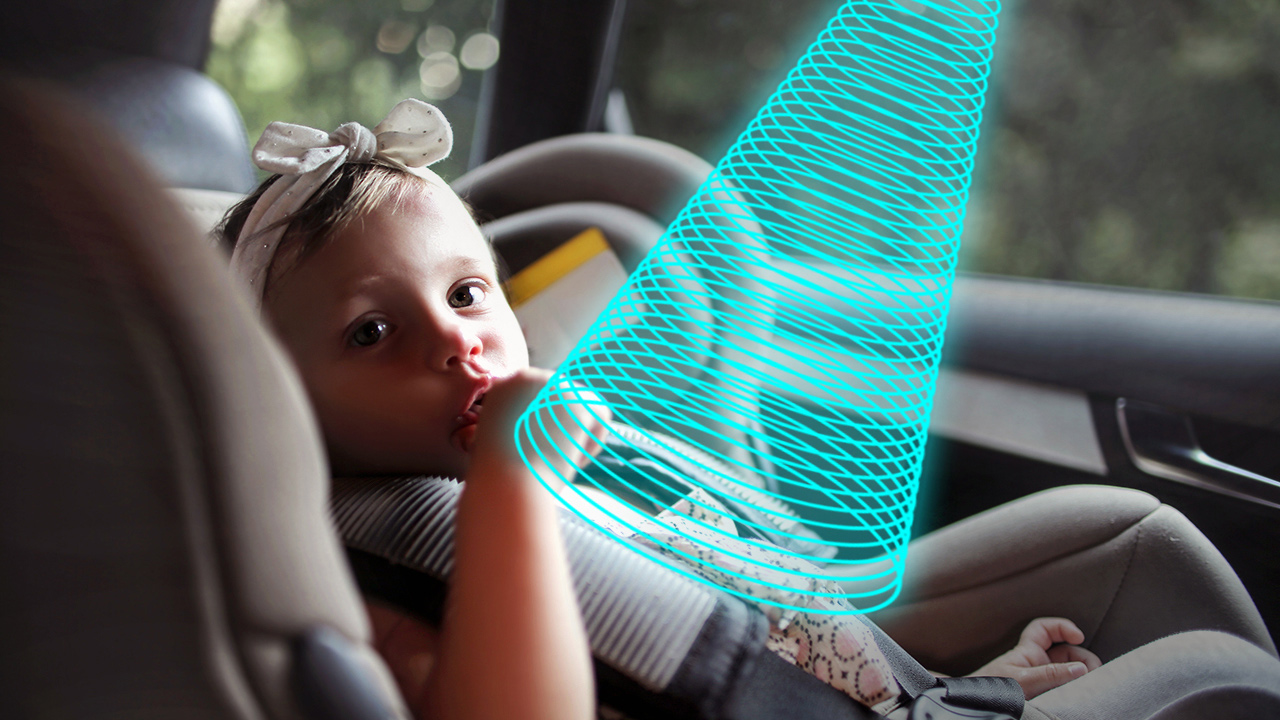
When shopping for new cars, safety-minded consumers can review New Car Assessment Program (NCAP) ratings to see how cars compare NCAP ratings vary by region, but Euro NCAP has been driving the initiative for child presence detection inside cars as part of its roadmap.
Going into 2025 and beyond, only direct sensing solutions will garner NCAP points, steering automakers away from indirect sensing alternatives – such as door-opening logic, pressure capacitive sensing and unreliable weight sensing solutions – toward approaches that use a single 60-GHz radar sensor.
60-GHz radar sensors deliver improved accuracy and are more cost-effective than solutions such as weight sensors and camera-based alternatives, which can struggle in challenging real-world lighting conditions. Sensors such as the 60-GHz AWRL6432 radar sensor can help you meet Euro NCAP design requirements by enabling in-cabin sensing that can detect a child’s presence in a car, including in the footwells, and enable very low system bill-of-materials costs.
| See our automotive 60-GHz radar demo video | |

|
Watch the demo video "Using 60-GHz radar sensors for automotive child presence detection and intruder alerts" to learn how low-power 60-GHz mmWave radar sensors can deliver full-cabin automotive child presence detection and intruder monitoring. |
Streamlining automotive child presence detection
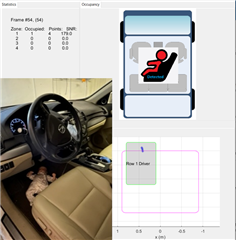
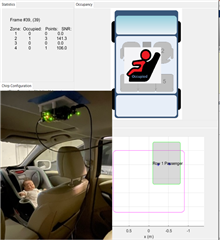
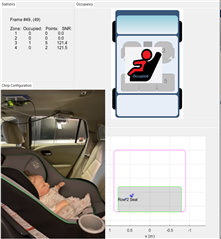 Figure 1 (a) Detection of a child (Baby
Doll) in the front driver footwell, (b) front passenger seat rear-facing, and
(c) 2nd row driver-side rear-facing inside SUV using the
AWRL6432.
Figure 1 (a) Detection of a child (Baby
Doll) in the front driver footwell, (b) front passenger seat rear-facing, and
(c) 2nd row driver-side rear-facing inside SUV using the
AWRL6432.Harnessing the low-power capabilities of mmWave radar sensors
- Enabling highly accurate child presence detection without performance trade-offs to save power on multiple trips.
- Also facilitating intrusion detection with the same sensor, protecting vehicles until the consumer’s next trip.
For intrusion detection capabilities, radar sensor must be able to continuously run, monitor and accurately detect an intruder inside the vehicle for extended periods of time.
Figure 2 shows that the AWRL6432 sensor is capable of proximity sensing, detecting a person close to the car 1 m out. This is important for false flags if, for example, someone was standing close to a car in a grocery store parking lot loading their own groceries into their car. If a person were to actually break into the car, breaking the proximity zone by sticking their hand through a window, for example, the sensor would then alert owners that there is an intruder.
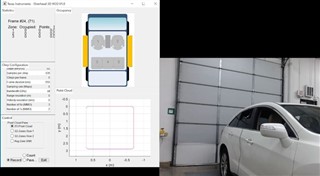
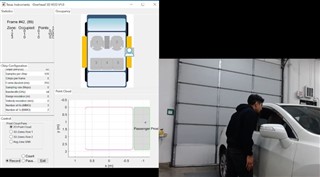
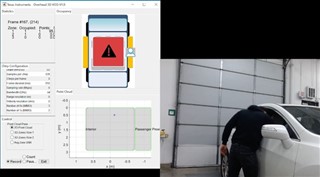 Figure 2 Intrusion detection simulation
using the AWRL6432 (a) No living presence near car, (b) Person standing near the
car, (c) Person reaching into car, Sensor detecting an arm reaching through a
car window.
Figure 2 Intrusion detection simulation
using the AWRL6432 (a) No living presence near car, (b) Person standing near the
car, (c) Person reaching into car, Sensor detecting an arm reaching through a
car window.